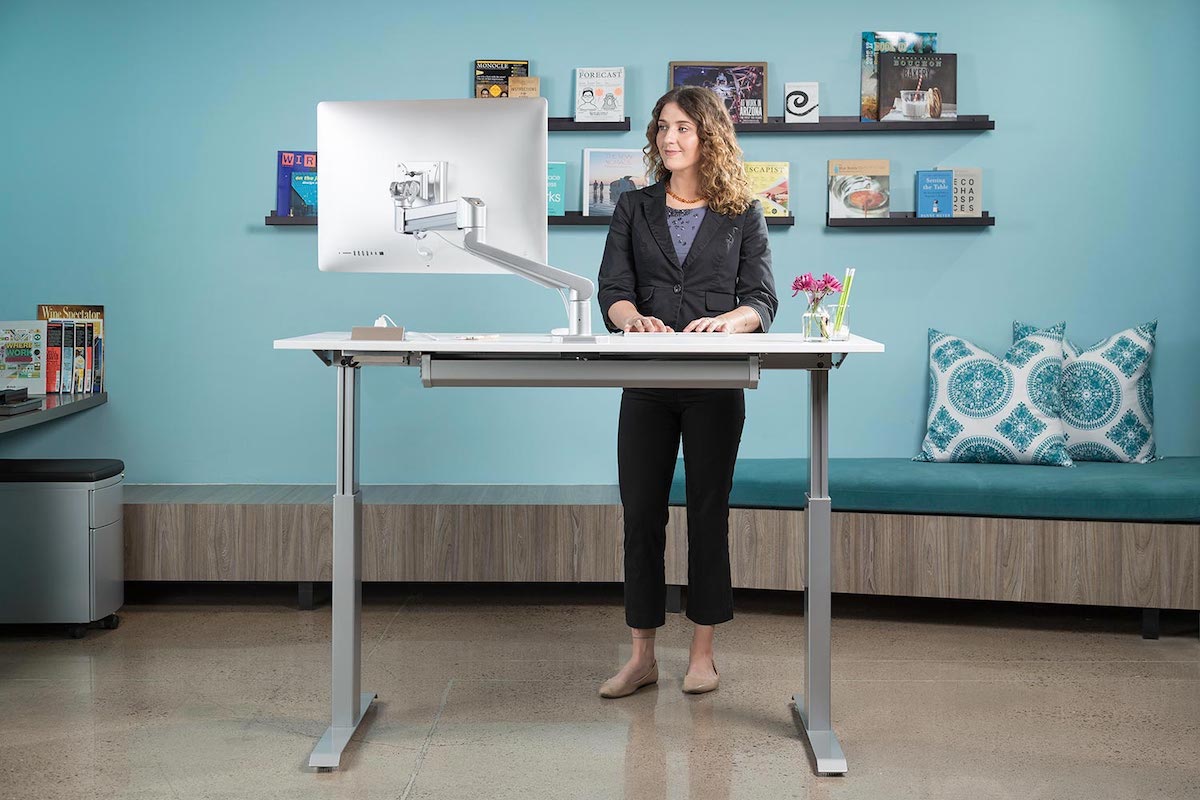As more and more employees work from home in an effort to slow the spread of coronavirus, it’s becoming apparent that many of us aren’t properly equipped to do so.
Laptops have been sat on washing baskets and atop kitchen benches, while ironing boards have been transformed into makeshift stand-up desks.
Is your current setup allowing you to sit with a straight spine, or do you resemble something from The Hunchback of Notre Dame?
Improper posture can wreak havoc on your back and neck, so we spoke with Tim Keeley, Founder and Principal Physiotherapist at Physio Rehab, to find out exactly how to set up a home office to avoid unnecessary strain.
The monitor
“The monitor needs to be up at eye height, meaning the top of the screen level with your eyes,” says Tim.
“If you don’t have a plug-in monitor for your laptop, use your laptop as the screen and use a plug-in or wireless keyboard and mouse. When sitting upright, the monitor should be an arms-length away.”
Given that many of us will be working remotely for the foreseeable future, it might be worth investing in a separate larger computer monitor that’s easier on the eyes. The design experts at Herman Miller say they’ve seen “a 70% increase in dual monitor use since 2002” and that “multiple studies indicate that people who use two screens are more productive”.
The chair
“If you don’t have an ergonomic adjustable chair at home, use a sturdy dining room chair with a straight back. You can then put a pillow behind you and lean on it for comfort,” Tim explains. “Keep your shoulders gently drawn backwards and downwards when sitting and your keyboard close. This will prevent the rounding and slumping effect of your spine.”
If you need a little extra support, why not invest in a gel and memory foam seat cushion like this one – which comes with more than 10,000 reviews on Amazon.
Sitting vs standing
“You should only be spending two hours sitting before you get up and move around, then spend one to two hours standing at an upright desk. If you don’t have an upright desk solution, place your keyboard and mouse on the kitchen bench and prop the laptop up higher on a sturdy stack of books,” Tim recommends.
Standing, pacing or even lying flat on your back are three ideal positions for phone calls.
“Every time you change position from sitting to standing and back again, go for a short walk around the house to stretch your legs,” says Tim. “Then, try 8-10 lower back bends (arching backwards) before you sit down again.”

Location, location, location
Anyone who has set up their computer in high-traffic areas such as the kitchen or dining room will know how easy it is to get distracted. The best place for your home office is a quiet, well-lit (natural light where possible) areas that is separate from the main living areas in the house. This will also help you separate your home life from your work life.
Desk essentials
A UCLA study found that when we’re in a cluttered space, our cortisol levels rise, heightening our fight-or-flight response and causing us to feel stressed and anxious.
Try to keep only the essentials on your desk:
- Your computer, mouse and keyboard
- A notebook and pen for jotting down ideas
- A beverage
- Frequently used items like a stapler, cellotape or scissors
Yes, you read that list correctly – no phone. Unless the task you’re doing requires it, try keeping your phone in another room. Without this distraction, you’re likely to notice a big boost in productivity.







